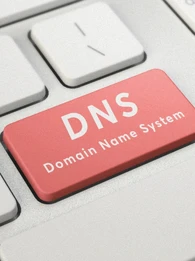
Lis Anderson, Director, AMBITIOUS PR https://www.ambitiouspr.co.uk/tech-pr-agency/
The tactics used in PR and marketing are growing ever more creative; content marketing is king but the channels for a tech business to communicate through have also exploded. It's not just a case of print or online media, it's social media, podcasts, newsletters and your tech brand's own website. As the number of platforms has grown, there is an even greater opportunity for brands to go where their customers and potential customers are.
The currency in all of these endeavours is emotional connection: a currency so valuable that tech brands are willing to invest even budgets in deepening this connection as they understand the extent to which it will foster loyalty.
But the greatest vehicle to deliver a meaningful connection with customers isn't as high-tech as you might think. In fact, it's a tradition steeped in rich history: it relies on the ability to tell a good story about your brand.
Why is storytelling important for tech companies?
Brand storytelling can be a memorable opportunity to attract your audience's attention. It goes beyond the sales pitch and unoriginal marketing message often focused too heavily on the business. Instead, it’s a powerful tool to create meaningful connections and show the company's 'human side'.
It's a chance to tell the story about why your tech brand exists, your company culture and your brand's purpose. In the process, it's an effective way of building trust and brand loyalty quickly.
To tell your brand story, two principles must apply. To create a compelling narrative in such a way that reflects an authentic brand story, your brand voice and brand personality must shine through.
What is your tech brand's mission?
Working with a creative agency is a great avenue to help you unpick your brand's story. It starts with a messaging session designed to help you establish core messages about why your brand exists and what you stand for, as well as the solutions you provide.
This forms your brand identity and will be compiled into a messaging matrix and shared with all key spokespeople to ensure that everyone is on the same page when discussing your brand.
It will also form the basis for your marketing agency to develop great stories to your audience. These stories don't necessarily need to be told by your brand. Once your messaging framework is entrenched, you can also begin to identify other brand advocates. Some of the best brand stories are told by customers or third parties; it could be a story telling a great example of business success gained through your solutions; perhaps it’s made them more agile, productive and saved them money?
Another essential part of telling your brand's story is through thought leadership or opinion-based articles. This strategy is so effective because it allows you to champion a topic; whether that’s challenging the status quo or exploring a new tech concept. Or perhaps you can offer a new perspective along with some expert advice on a topic that's core to your industry; whether that's the challenges of hybrid working practices on company culture or how to navigate the cost of living crisis.
The world of PR has transformed from the days of heavy press releases and company announcements to more creative content marketing-led initiatives. More and more press releases centre around storytelling in the form of calls to action and research-led announcements.
Choose the topics that reflect your brand story and keep the focus on your customers rather than your brand. What issues and challenges are they experiencing? How can you link that back to what you do as a business and the success you deliver for your customers?
How to tell your brand story
Both B2b and B2c brands have been telling stories to great effect for years in a bid to attract more customers. Succeeding in an ever more digital world depends on a brands ability to create meaningful connections. It involves living and breathing your brand's story and communicating your core messages in everything you do, from your company's blog posts and LinkedIn articles, to thought leadership articles in industry press, podcasts and beyond.












